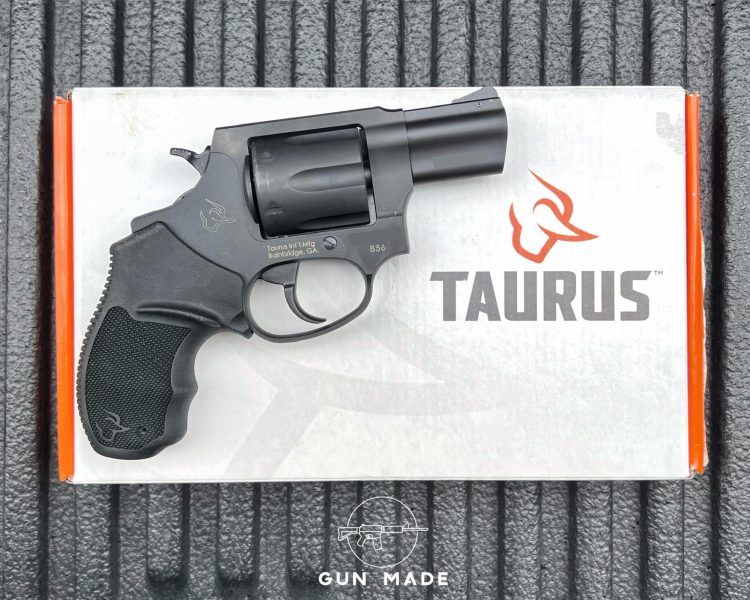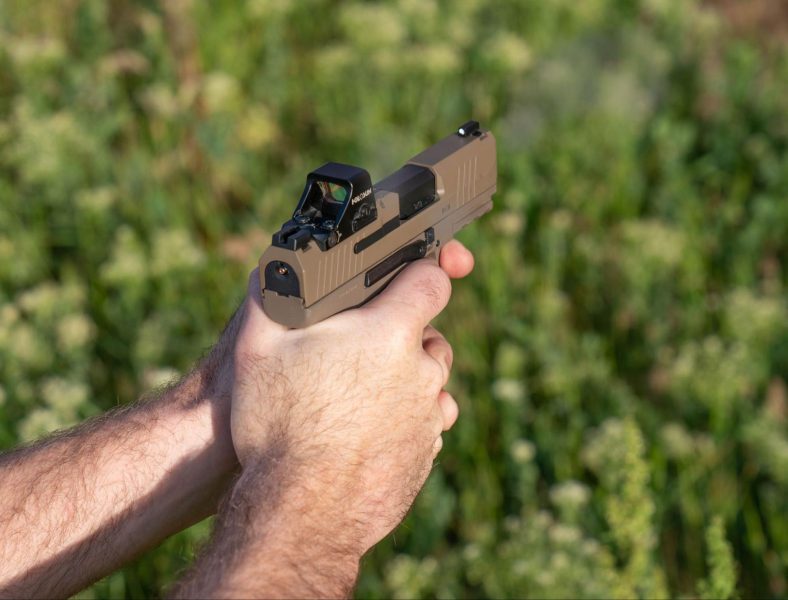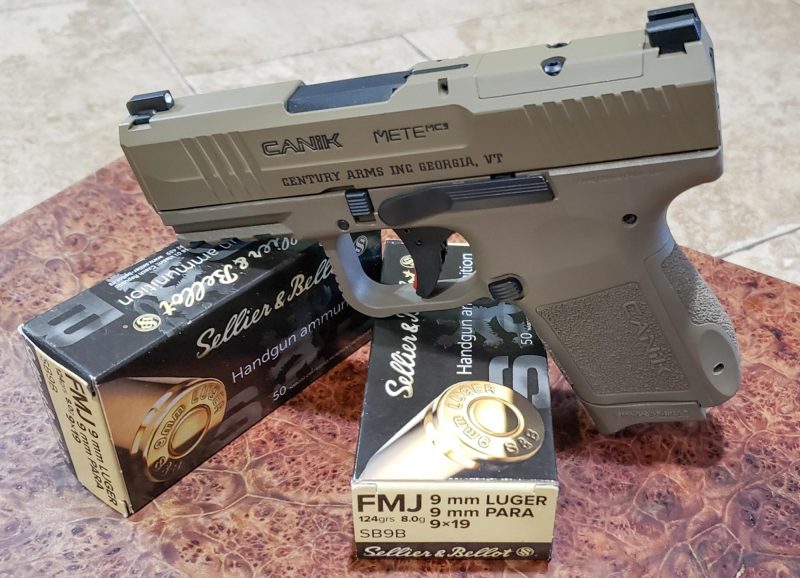Introduction: Revolvers vs. Semi-Automatic Pistols – Which is Right for You?
As an avid firearm enthusiast and the founder of GunMade.com, I’ve had my fair share of experience with both revolvers and semi-automatic pistols. These two types of handguns are quite different in design, capacity, and operation, but each has its own unique set of advantages and disadvantages.
So, which one is right for you? That depends on your experience level, intended use, personal preference, and budget.
In this comprehensive article, we will dive into the world of revolvers and semi-automatic pistols, exploring their mechanisms, pros and cons, and some popular models. We’ll also discuss how to choose between the two, drawing from my personal experience and insights from other experts in the field.
By the end of this post, you’ll have a better understanding of these two types of handguns, and hopefully, be closer to making an informed decision on which one suits your needs and goals best. So, let’s get started!
Revolvers: The Wheel Gun Wonders

How Revolvers Work
Revolvers are a classic firearm design that has stood the test of time. Their basic mechanism consists of a rotating cylinder, usually holding five to eight cartridges, and a single barrel. When the trigger is pulled, the cylinder rotates, aligning the next round with the barrel and firing pin. This simple yet effective design is one of the reasons revolvers have remained popular among gun enthusiasts.

To better understand the parts and functions of revolvers, let’s break it down:
- Cylinder: Holds the cartridges and rotates to align the next round with the barrel
- Barrel: Directs the bullet as it exits the gun
- Hammer: Strikes the firing pin, which ignites the primer and discharges the round
- Trigger: Releases the hammer to fire the gun
Revolvers: Pros and Cons
Revolvers have some notable advantages and disadvantages when compared to other firearms:
Advantages
- Simplicity: Fewer parts and a straightforward design make revolvers easy to operate
- Reliability: Less likely to jam or malfunction due to the simpler mechanism
- Maintenance: Easier to clean and maintain than more complex firearms
Disadvantages
- Capacity: Limited by the number of rounds the cylinder can hold, typically less than semi-automatic pistols
- Reload Speed: Generally slower to reload than their semi-automatic counterparts
- Concealability: The cylinder’s width can make revolvers more challenging to conceal
Examples of Revolvers
Some popular and widely used revolvers include:
- Smith & Wesson Model 686: A versatile .357 Magnum revolver with a 6-round capacity, 4-inch barrel, and adjustable sights. Known for its accuracy and reliability, but can be heavier than other options.
- Ruger LCR: A lightweight, compact revolver with a 5-round capacity, ideal for concealed carry. Chambered in various calibers like .38 Special, .357 Magnum, and 9mm. Its innovative design reduces recoil, but some users may experience a heavier trigger pull.
Semi-Automatic Pistols: The Modern Choice

How Semi-Automatic Pistols Work
Semi-automatic pistols are the more modern successors to revolvers, featuring a detachable magazine that holds the cartridges. When the trigger is pulled, the pistol fires a round, ejects the spent casing, and loads a new cartridge from the magazine. This process occurs rapidly, allowing for quicker follow-up shots and higher capacity.

Key parts and functions of semi-automatic pistols include:
- Slide: Houses the barrel and contains the firing mechanism
- Barrel: Directs the bullet as it exits the gun
- Magazine: Detachable and holds the cartridges
- Trigger: Releases the firing mechanism to discharge a round
Semi-Automatic Pistols: Pros and Cons

Semi-automatic pistols also have their own set of advantages and disadvantages:
Advantages
- Capacity: Higher round capacity than revolvers due to detachable magazines
- Reload Speed: Quicker to reload with the use of additional magazines
- Concealability: Generally slimmer and easier to conceal than revolvers
Disadvantages
- Complexity: More parts and a more complex design
- Maintenance: Requires more regular cleaning and maintenance than revolvers
- Learning Curve: Can be more challenging for new shooters to learn and operate
Examples of Semi-Automatic Pistols
Popular and widely used semi-automatic pistols include:
- Glock 19: A versatile 9mm pistol with a 15-round capacity, 4-inch barrel, and polymer frame. Known for its reliability, durability, and ease of use. Some users may find the grip angle to be less comfortable than other options.
- Sig Sauer P320: A modular, striker-fired 9mm pistol with a 17-round capacity and interchangeable grip modules. Highly customizable, but can be more expensive than other options.
How to Choose Between Revolvers and Semi-Automatic Pistols
Revolvers vs. Semi-Automatic Pistols: Factors to Consider
Personal Preference and Experience Level
Your choice between a revolver and a semi-automatic pistol can significantly be influenced by your comfort level and experience with firearms.
New shooters might prefer the simplicity of a revolver, as they have fewer moving parts and a straightforward manual of arms. On the other hand, experienced shooters might enjoy the higher capacity and quicker reload times of semi-automatics.
Intended Use
The purpose of the firearm plays a crucial role in your decision. If you’re considering a handgun for concealed carry, the sleek, slim design of most semi-automatic pistols may appeal to you. If, however, you’re looking for a reliable home defense weapon, a revolver’s simplicity, and reliability could be advantageous.
Budget
Pricing varies greatly among both revolvers and semi-automatic pistols, and the best gun for you is the one you can afford and feel comfortable operating. Generally, you can find reliable options in both categories in a similar price range but don’t forget to factor in the cost of ammunition, holsters, and any modifications or accessories you might need.
Choosing the Best Pistol for Your Needs and Goals
Test Fire Different Models
Whenever possible, take the opportunity to test fire different models. This gives you a hands-on feel of the grip, trigger pull, recoil, and overall handling, allowing you to assess if a particular model suits you.
Compare Reviews and Ratings
Online reviews and ratings can be an excellent source of information. Look at what other users have to say about reliability, accuracy, ease of use, and durability. However, remember that personal preference will play a significant role, and what works for one person might not work for you
Consult Experts or Instructors
Experts, such as firearms instructors or seasoned shooters at your local gun range, can provide invaluable insights. They can guide you on the pros and cons of different models based on your specific requirements and goals.
From Personal Experience: When You Might Need Either Option
In my personal journey with firearms, I’ve found a time and place for both types of handguns. A reliable revolver was my companion on many outdoor adventures, appreciating its simplicity and reliability in unpredictable situations.
On the other hand, I’ve leaned towards a semi-automatic for competitive shooting, valuing its capacity and quicker reloading times. Additionally, I’ve found the slimmer semi-automatic design easier for concealed carry, providing comfort without sacrificing personal security.
Remember, the choice between a revolver and a semi-automatic pistol isn’t a matter of which is objectively better, but rather which is better suited to your unique needs, comfort level, and intended use. Stay informed, take your time, and make the decision that’s right for you.
Conclusion: Making the Right Choice for Your Firearm Needs
Finding the Perfect Fit
Ultimately, the choice between a revolver and a semi-automatic pistol comes down to personal preference, experience level, intended use, and budget. By understanding the key differences between these two types of handguns, you can make an informed decision that best suits your unique needs and goals.
Remember, there is no one-size-fits-all answer when it comes to firearms; what works for one person may not work for another.
Informed Decisions for Better Outcomes
As you weigh the pros and cons of revolvers and semi-automatic pistols, keep in mind the importance of test firing different models, comparing reviews and ratings, and consulting experts or instructors.
This will provide you with a well-rounded perspective, helping you make the best choice for your individual needs.
Stay Safe, Stay Informed
The world of firearms can be complex and ever-evolving, but staying informed and educated is the key to ensuring your safety and satisfaction. Whether you choose a classic revolver or a modern semi-automatic pistol, make sure to follow proper gun safety protocols and always prioritize responsible ownership.
Ready, Set, Shoot!
Now that you’re equipped with the knowledge to make an informed decision, it’s time to hit the range and try out some different revolvers and semi-automatic pistols for yourself.
With the right information and hands-on experience, you’ll be well on your way to finding the perfect firearm to suit your needs and goals. Happy shooting!
Written By: Brady Kirkpatrick



How about a single-shot magazine-fed semi-automatic revolver? (With a light trigger pull, and no bulgy profile, in Pink or camo, For under $200.)
Revolver — Pull the trigger and it goes BANG! …. If it does NOT go BANG, then pull the trigger again until it does go BANG!…..
Semi-Auto — Pull the trigger and it goes BANG! …. If it does NOT go BANG, then figure out what type of malfunction you have and correct the problem and rack another round and pull the trigger again and if it still does NOT go BANG then figure out what type of malfunction you have again and correct the problem and rack another round and pull the trigger again …. but it might be all over by then.
IF you are NOT skilled with a Semi-Auto and its potential malfunctions then go with the Revolver.
As the author pointed out, it really boils down to personal preference and firearm handling skill. There are definitely more things that can go wrong with the semiautomatic. It’s imperative to use quality magazines to lower the chance of a malfunction. Choice of ammo can also be a factor because some semiautomatic handle some ammo better than others. Great article!!
I personally do not like to carry a semi-automatic with a round chambered which to me gives an edge to the revolver. With the semi I would need to rack the slide to chamber a round in an emergency situation. While I am doing that the revolver can be firing its first round. What do they say the average gun battle lasts – three shots?? Thus needing a 15 round magazine may not be that big of an advantage.
With current, well made autoloaders, malfunctions should be rare. With either type of weapon, buy the best quality you can afford. No, not the most expensive, but the best quality from reputable manufacturers.
Been shooting for more than 50 years. Have carried an old Colt 1911, officers’ model for more than 40 years. In those years, I’ve had only a couple malfunctions. All due to poor ammo. Happens when you buy cheap surplus ammo for range/practice. Always use good ammo for carry/defensive use. Save the crap for range days.
And, I also have revolvers for certain uses. If I can wear a gunbelt, or shoulder holster, I like to use a revolver. Especially out where I may have to deal with large angry animals. Not many bears down here, but feral hogs are a problem. A heavy caliber revolver is the best option if a long gun is not practical.
It boils down to what each person is comfortable with and what is the most practical for your needs. Smaller frame semi auto pistols are easier to conceal. Small frame revolvers are light, easy to use but have limited capacity. Whichever you choose, practice and train with the weapon so you are capable of actually hiting your target under any conditions.
A few strong points for revolvers that were not mentioned:
1. There is no need to do extensive function testing with your expensive hollow point “duty” ammunition to ensure that your revolver cycles reliably with your chosen load. Any reputable factory ammunition in the caliber your revolver is chambered for will work.
2. Revolvers chambered in certain calibers are also compatible with another caliber. A revolver chambered in .357 Magnum will also accept the milder .38 Special (but not vice versa). A .44 Magnum will fire .44 Special with no problems.
3. A wide variety of aftermarket grips in different shapes and sizes can be found for popular makes and models of revolvers. It is generally easier to customize a revolver to fit comfortably in your hand than it is with a semi-auto.
One advantage to the “wheel-gun” is you know when it is loaded. Which can make it a plus with novice firearms owners who have children.
A revolver will not come out of battery when forced to make a contact shot. This makes it an excellent pocket carry.,especially in a CQB situation.